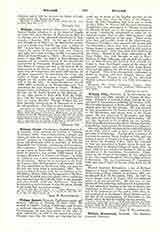

William, ABBOT OF Saint-BENIGNE at Dijon, celebrated Cluniac reformer, b. on the Island of Giuglio on Lake Orta near Novara in Piedmont in 962; d. at Fecamp, one of his reformed monasteries in Normandy, January 1, 1031. At the age of seven he was brought as an oblate to the Benedictine monastery of Locedia near Vercelli, and went to Cluny in 987. A year later he was sent by Abbot Majolus to reform the priory of Saint-Saturnin near Avignon and, upon his return to Cluny in 990, was appointed Abbot of Saint-Benigne at Dijon. He was ordained priest, June 7, 990. As Abbot of Saint-Benign he inaugurated an extensive reform of the Benedictine monasteries in Normandy, Burgundy, and Lorraine. The Bishop of Langres put him at the head of all the monasteries in his diocese and finally he ruled over more than 40 monasteries and about 1200 monks. In all these monasteries he introduced the severe discipline of Cluny and in many of them established schools for the monks and monastic candidates as well as for the laity. At Saint-Benigne he erected (1001-1018) a church in the Romanesque style then considered the most beautiful in France. William’s literary works, consisting of seven sermons, one mystic treatise on St. Paul’s Epistle to the Romans, vii, 15 sq., eight letters to Pope John XIX, St. Odilo, etc., and his testament, are printed in Chevalier (loc. cit. below, 213-86). Though William has not been formally canonized, he is honored as a saint in various places. His feast is on January 1.
MICHAEL OTT

